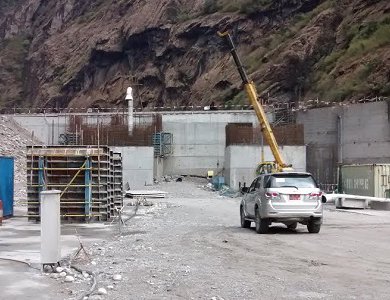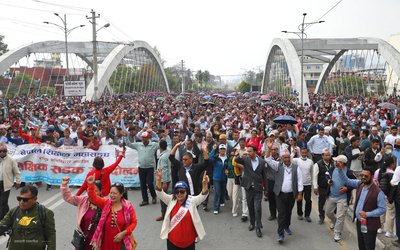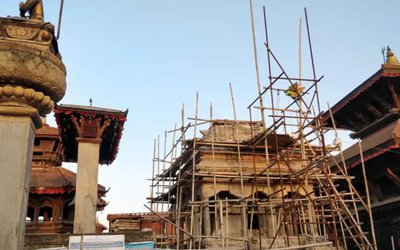
Environmental assessment (EA), as a tool introduced in the developed countries in 1970s, was used in Nepal knowingly or unknowingly since the 1980s through periodical policies to identify, predict and evaluate environmental impacts of the prescribed physical infrastructure projects and avoid, mitigate or compensate for significant adverse impacts and enhance beneficial ones. This predictive tool has a clear beginning and an end, i.e., it starts from environmental screening and ends with environmental auditing. At present, almost all countries are using this tool through policies or laws and are benefitting by making the development projects or actions environment-friendly and sustainable. There are several examples that EA has avoided or mitigated costly mistakes and reduced substantial environmental costs. In Nepal, project-level EA is carried out for the prescribed projects. Interestingly, proponents or developers consider it additional burden which might be related to the inadequate understanding of its importance or making this simple tool complicated.
With the experience of being involved in developing, simplifying and using this tool since mid-1980s through the development of National Environmental Impact Assessment (EIA) Guidelines in 1993, EIA Guidelines for forestry sector in 1995, providing technical inputs, including EA provisions in the Environment Protection Act (1996) and its Rules (1997), developing guidelines, manuals, report review and decision-making processes, and engaging in EA report approval process for several years, it can be said the basic issue is making this tool complicated, understanding it as a 'panacea' for all environmental challenges, and handling and interpreting it by 'non-professionals'. No doubt, EIA is a project-specific predictive tool and addresses project-specific impacts but developers, report preparers, reviewers and decision-makers have made it 'most generalised' and non-specific or enlarged its scope, thereby deviating from its 'core principles'. It basically should focus on project location and its immediate surrounding by categorising 'direct' and 'indirect' impact areas, quantifying the potential loss and finding appropriate, practical and cost-effective mitigation options. All site-clearance related impacts could be identified, indirect impacts could be predicted, and significance of both identified and predicted impacts could be evaluated. Once significance of impact is known, adverse impacts could be avoided or mitigated or compensated and beneficial ones could be enhanced. However, reviewing the EIA reports of over 100 projects, these six key words (identification, prediction and evaluation, and avoidance, minimisation and compensation) have not been used in almost all EIA reports.
Investors want good return. EIA is carried to make the investment environment-friendly and sustainable. They have invested to make their EIA report realistic and practical but some of the report preparers have crossed their 'ethics', started 'cut and paste' and have prepared 'under quality' or sometimes 'useless' reports. In many cases, project developers trust on report preparers and do not look at their EIA reports. When such reports are submitted, approving agencies face lots of difficulties to issue 'environmental clearance' for project implementation. Project developers are worried about cost of delayed decision. The most realised problem is unlinked data and information, 'cut and paste' and weak interpretation. In most cases, baseline information is unlinked with alternative analysis, adverse impacts and corresponding mitigation measures, environmental management plan, and monitoring, evaluation and auditing parameters. For example, baseline information says no fish in the river or stream with clarity that project activities will not impact on fish but cost-based mitigation measures are proposed for fish ladder or passage. Similarly, baseline information clarifies no rare or endangered or protected species in the core project area, but EIA report includes impacts on such species with monitoring requirements. It is unclear, how impacts occur in absence of baseline. Such unrealistic reports along with non-compliance of existing legal provisions take longer time for approval. This reality should not be blamed for 'EIA tool', saying that it does not produce good result and is costly. If this tool is considered ineffective, almost all countries might not have used it. This has to be understood clearly at all levels. It is also noticed that technical issues are interpreted non-technically, clearly indicating departure from its concept and core principles. This is not the 'fault' of the tool but developers are suffering from under quality report, 'anybody can prepare report and interpret it as per their wish syndrome'.
This ground reality should be understood by the project developers/investors before blaming the tool and influencing the 'politicians and decision-makers' by lobbying for exemption. It is necessary to comply with the law of the land, prepare EIA principles-based practical and site-specific report and make their investment environment-friendly and sustainable. If other countries could benefit from this EA process, why should Nepalese investors be shy in using this proven tool? It is also clear that all EIA reports propose cost for addressing adverse impacts which is around or less than 2-3 percent of the total project cost. It depends upon the size and location of the project, and nature of impact. In general, the greater the size of the project in an environmentally less sensitive area, lower the cost for environment management, and higher the benefit from project sustainability.
What is needed to benefit from EIA is clear. The competent government agency should introduce licensing system to conduct EA and make the proponent responsible in: (i) preparing project's site-specific EA report with legal compliance; (ii) engaging proponent to review and ensure clear linkages (baseline to environmental auditing) and practically own its report; (iii) realising to benefit from 'low hanging fruits' generated by EA study; and (iv) implementing enhancement and mitigation measures with 'in-built' monitoring system. Environmental cost is greatly addressed by integrating mitigation measures into project design.
The government agency should: (i) adopt fast-track decision-making process to encourage investors to comply with the existing policy and legal provisions; (ii) 'blacklist' report preparers for proven 'cut and paste' report; (iii) institutionalise environmental monitoring; and (iv) conduct environmental auditing and make all reports public. Once environmental monitoring and auditing is internalised, it provides clear information on 'which mitigation measures worked and which did not'. This will also contribute to prepare future EIA reports practical. If human resource is a problem, approving agency may wish to develop a system for 'independent technical review' and it can only concentrate on policy and legal compliance.
In a nutshell, EA is a widely accepted and proven tool for environmental management, and for making project/undertaking environment-friendly and sustainable. Let us make site-specific EA report, implement measures with monitoring and auditing provisions, and blame it if it does not produce good results. Without efforts in making practical report and implementing environmental mitigation and enhancement measures along with monitoring and auditing, investors in a democratic society should bear high corporate social responsibilities. This has been noticed in hydropower projects. In principle, EA tool avoids or minimises it, if used properly.

Batu Uprety
Former Joint-Secretary and Chief of Climate Change Management Division, Ministry of Environment (then), and former Team Leader, National Adaptation Plan (NAP) formulation process. E-mail: upretybk@gmail.com
- Teaming up Climate Change Negotiation
- Apr 18, 2025
- Sagarmatha Sambad: Likely Bearing the Fruits
- Mar 27, 2025
- Decadal Experience In Preparing The NDC
- Mar 03, 2025
- Over Five Decades Of Concern On Air Pollution
- Jan 16, 2025
- Damaging The Functional EIA Track
- Dec 22, 2024














